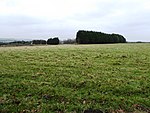Lympne light aircraft trials
Aviation competitions and awardsAviation in the United Kingdom
The Lympne Light Aircraft Trials were held to encourage the development of practical light aircraft for private ownership, with a strong but not exclusive emphasis on fuel economy. They were held in 1923, 1924 and 1926. Each year saw different restrictions on engine size, framed initially in terms of capacity and then weight. The Daily Mail newspaper provided cash prizes throughout though the initiating donation came from the Duke of Sutherland. The Air Ministry were prize givers in the 1924 event. The trials were held at Lympne in Kent, England.
Excerpt from the Wikipedia article Lympne light aircraft trials (License: CC BY-SA 3.0, Authors).Lympne light aircraft trials
Otterpool Lane, Folkestone and Hythe District
Geographical coordinates (GPS) Address Nearby Places Show on map
Geographical coordinates (GPS)
| Latitude | Longitude |
|---|---|
| N 51.08 ° | E 1.0166666666667 ° |
Address
SICO Europe
Otterpool Lane
TN25 6DB Folkestone and Hythe District
England, United Kingdom
Open on Google Maps








